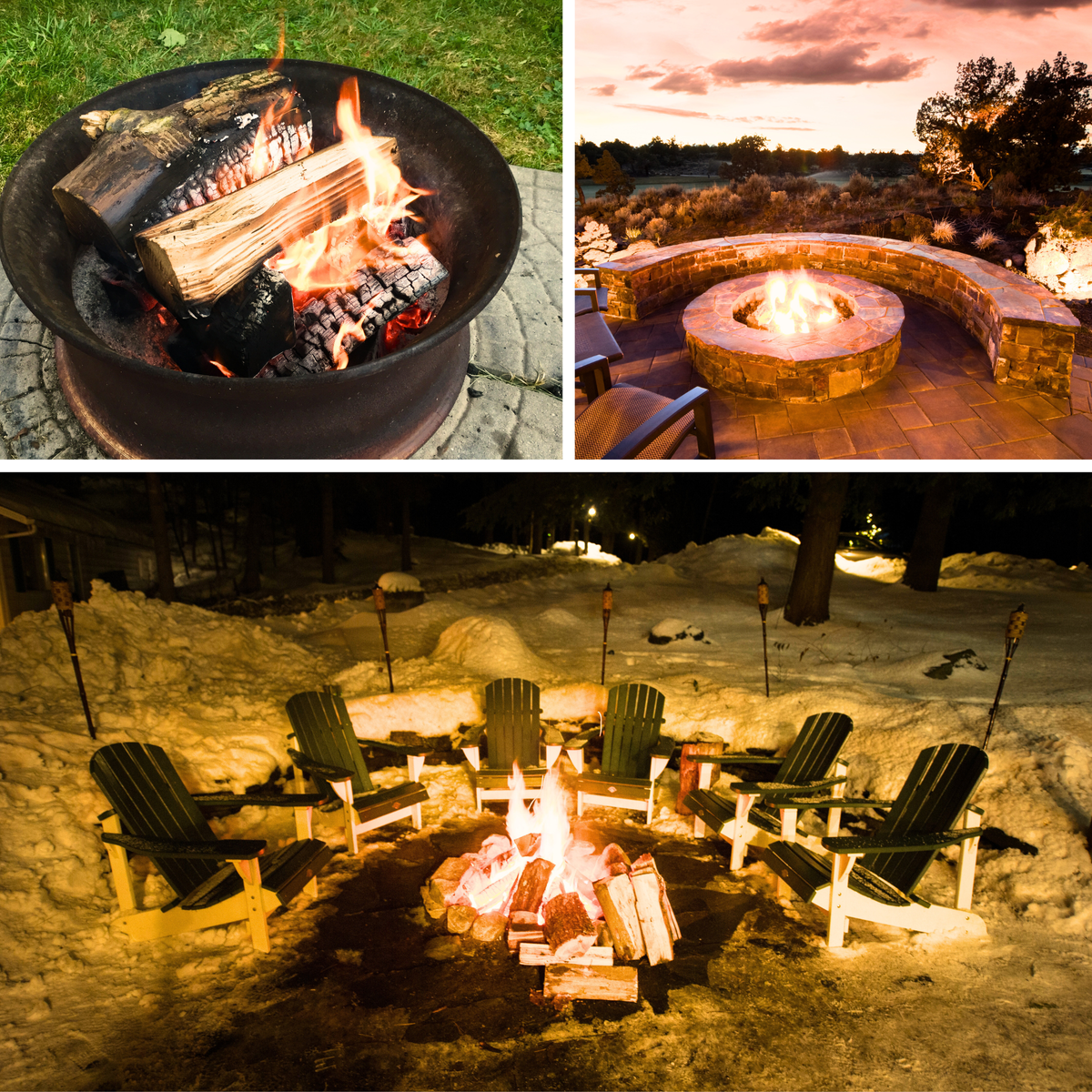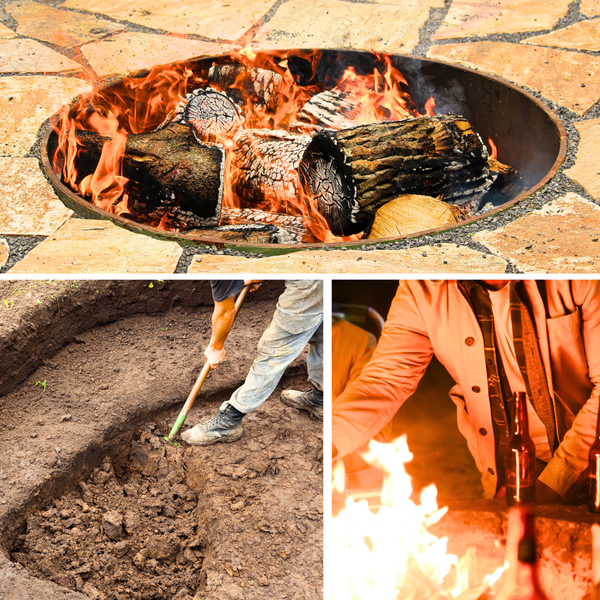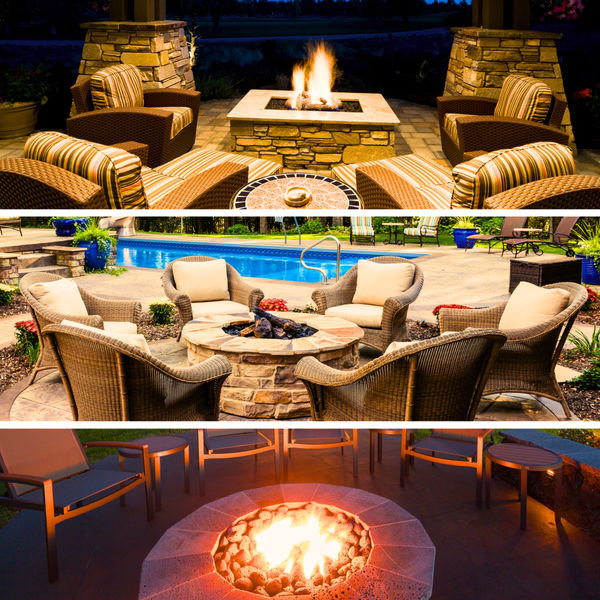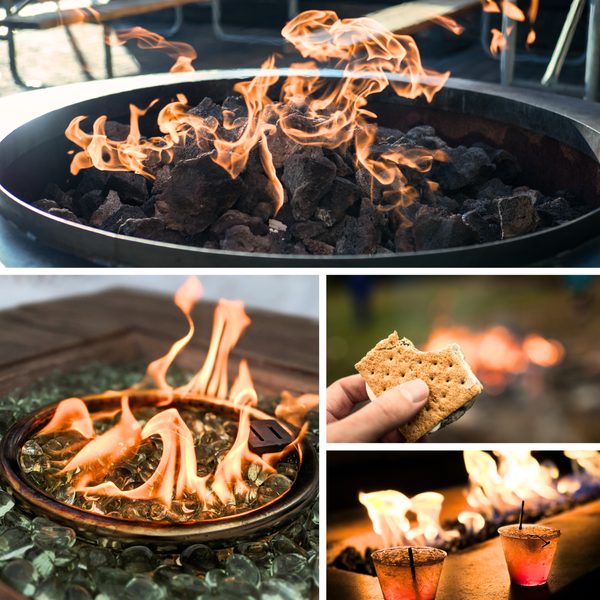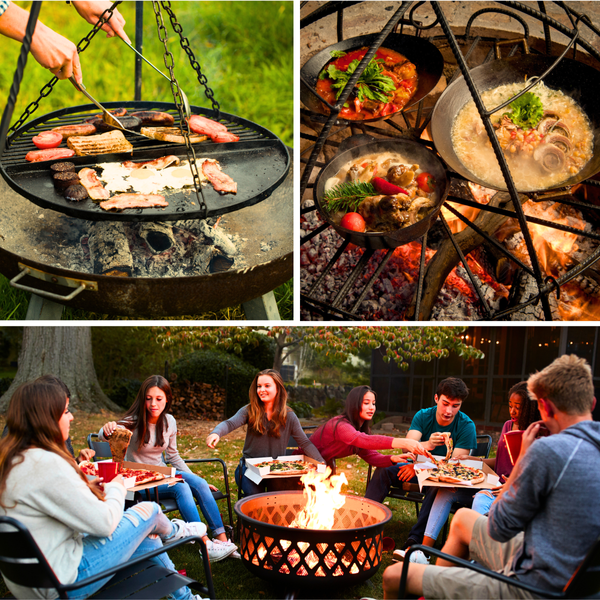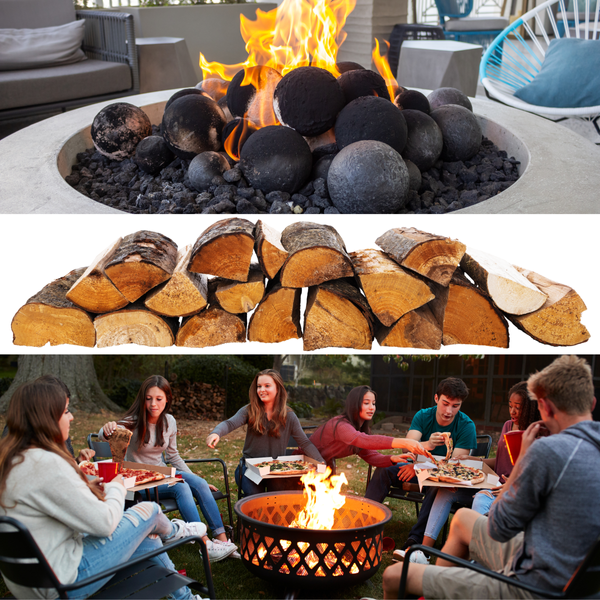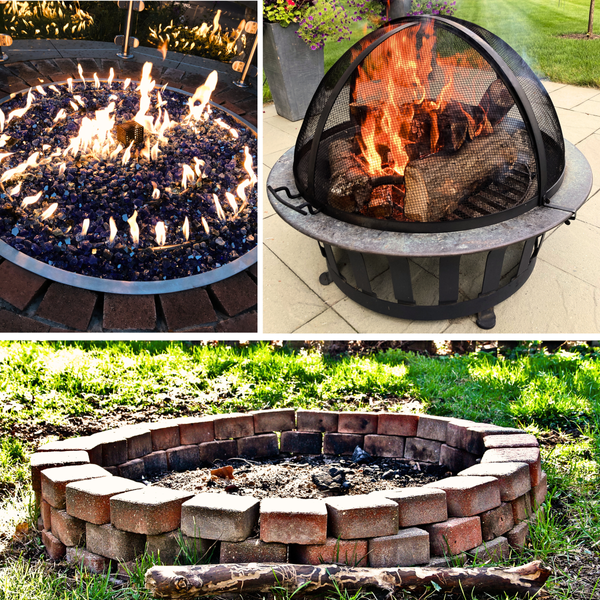Key Takeaways:
- Understand the importance of proper placement and clearance for fire pits to prevent accidents.
- Learn essential fire pit safety tips to ensure a safe and enjoyable experience.
- Recognize the significance of having the right safety equipment on hand, such as a fire extinguisher and spark screen.
Outdoor fire pits can transform your backyard into a cozy haven for family gatherings or a tranquil spot for a summer evening with friends. However, with the charm of crackling flames comes the responsibility of ensuring safety. This article will guide you through the essentials of outdoor fire pit safety, so you can enjoy those warm nights with peace of mind.
Choosing the Right Location for Your Fire Pit
Selecting an appropriate spot for your fire pit is the first step towards a safe outdoor fire experience. Ensure that the fire pit is placed on a non-flammable surface, such as bricks or stone, and not directly on a wood deck or grass, which could easily catch fire. It's crucial to maintain a safe distance from flammable structures, including your house, trees, and outdoor heaters. A minimum clearance overhead and around the pit's diameter is necessary to prevent flying embers from causing out of control fires.
The Importance of a Spark Screen
A spark screen is an indispensable accessory for any fire pit. It serves as a barrier to keep burning embers contained and prevent them from becoming flying embers that could ignite nearby flammable surfaces. Always use a spark screen when you have a roaring fire, especially in areas where there's a risk of sparks reaching dry foliage or other flammable materials.
Fire Pit Safety Tips: Before Lighting Up
Before you light up your fire pit, it's essential to check for any power lines or overhanging branches that could pose a danger. Keep a garden hose, water bucket, or a fire extinguisher within reach in case the flames get out of control. Never use gasoline or lighter fluid to start your fire, as these can cause high emissions and dangerous flare-ups. Instead, opt for safer alternatives like natural fire starters or kindling.
Starting Your Fire Safely
When you're ready to start your fire, do so with care. Use only recommended fuels like seasoned hardwood, which burns cleaner and produces less smoke than softwoods like pine. Avoid using wood that's been treated or painted, as it can release toxic fumes when burned. Lighter fluid should be avoided; instead, use a metal container or a designated fire pit lighter to ignite your fire safely.
Managing Your Fire Pit During Use
Once your fire is lit, never leave it unattended. Keep children and pets at a safe distance to prevent accidents. It's also a bad idea to burn trash in your fire pit, as this can contribute to fine particulate pollution and release harmful chemicals into the air. Always have someone responsible for monitoring the fire, ensuring it doesn't grow too large or become out of control.
Creating a Safe Perimeter Around Your Fire Pit
When setting up your wood fire pit, it's crucial to establish a safe perimeter. This means ensuring that the pit's diameter is large enough so that flames and sparks don't escape, but also that there's ample space around it. A good rule of thumb is to keep at least two feet of clear ground between the edge of the fire pit and any surrounding objects or landscaping. This buffer zone helps prevent accidental fires and provides a safe area for people to sit and enjoy the warmth without getting too close to the flame.
Moreover, it's important to consider what's above your fire pit as well. Hanging objects like string lights should be positioned well out of reach of the flames to ensure they are completely safe from heat and sparks. By maintaining a clear vertical space as well as a horizontal perimeter, you can significantly reduce the risk of fire-related incidents, making your outdoor gatherings safer for everyone, especially kids who might be running around.
Selecting the Right Fuel for Your Fire Pit
Choosing the right fuel for your fire pit is a matter that shouldn't be taken lightly. The type of wood you select can affect both the safety and the efficiency of your fire. Hardwoods like oak or maple are ideal because they burn longer and produce less smoke than softer woods. Before lighting up, make sure the wood is dry and free from any chemicals or varnish, which can release harmful fumes when burned. It's also wise to avoid using too much fuel, as an overly large flame can be difficult to manage and poses a greater risk.
In addition to wood, some fire pits are designed to use alternative fuels such as propane or natural gas. These options can offer a cleaner burn with less ash to clean up afterward. However, it's essential to follow the manufacturer's instructions and handle any fuel with care. Whether you're using wood or gas, always store fuel in a safe, dry place away from the fire pit and out of reach of children, to prevent any accidents before they happen.
Keeping Your Fire Under Control
A roaring fire can be mesmerizing, but it's important to keep the flames at a manageable level. Use a shovel or poker to adjust the burning wood and keep the fire contained within the pit. If the fire starts to escape the pit's boundaries, act quickly to reduce its size and prevent any potential spread.
After the Fire: Putting Out the Flames
When the evening comes to an end, it's crucial to extinguish your fire completely. Douse the flames with water, ensuring that all embers are wet and no longer burning. Stir the ashes with a shovel to uncover any hot spots that may still be smoldering. Continue adding water until all the material in the fire pit is cool to the touch.
Cleaning Up: Disposing of Ashes Safely
After your fire pit has cooled completely, it's time to clean up. Ashes should be placed in a metal container and soaked with water to ensure they are fully extinguished. Never dispose of hot ashes in a trash can or compost pile, as they can retain heat for a long time and potentially start a fire.
Regular Maintenance for Safety
Regular maintenance of your fire pit is essential for safety. Inspect it for any cracks or damage before each use, and make any necessary repairs. Remove any debris or leaves that could catch fire, and ensure that the area around the fire pit is clear of any flammable materials.
Educating Family and Friends on Fire Pit Safety
Educate your family and friends about outdoor fire pit safety. Make sure everyone knows the rules for sitting around the fire pit, such as not throwing any objects into the flames and keeping a safe distance. It's also important to discuss what to do in case of an emergency, so everyone is prepared.
The Role of Fire Extinguishers and Safety Equipment
Having a fire extinguisher nearby is a critical safety measure. Make sure it's easily accessible and that everyone knows how to use it. Other safety equipment, like a pair of heat-resistant gloves and a long-handled shovel, can also be helpful in managing the fire and protecting yourself from burns.
Summary
Outdoor fire pits offer a delightful way to spend an evening, but they require a commitment to safety. By choosing the right location, using a spark screen, following fire pit safety tips, and having the proper safety equipment on hand, you can ensure that your outdoor fires are both enjoyable and safe. Remember to always supervise the fire, keep it under control, and fully extinguish it when you're done. Regular maintenance and educating those around you will further enhance the safety of your outdoor space.
FAQ Section
Q: How far should a fire pit be from my house or other structures?
A: Your fire pit should be at least 10 feet away from your house and any other structures or flammable materials to minimize the risk of accidental fires.
Q: Can I use my fire pit on a wood deck?
A: It's generally a bad idea to place a fire pit directly on a wood deck due to the risk of fire. If you must use a fire pit on a deck, ensure it's raised on a non-flammable base and has proper heat shielding to prevent damage and reduce the risk of fire.
Q: Is it safe to leave a fire pit burning overnight?
A: No, it's not safe to leave a fire pit burning unattended. Always extinguish the fire completely before going to bed or leaving the area to prevent the risk of the fire spreading.


